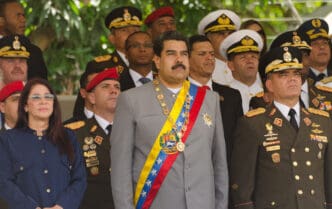Executive Summary
The Story So Far
Why This Matters
Who Thinks What?
The United States, under President Donald Trump’s administration, carried out a clandestine cyberattack against the Venezuelan government’s intelligence service computer network during the final year of his first term, successfully disabling the system. This previously unreported operation, described by four sources familiar with it, was reportedly an effort by the CIA to satisfy Trump’s ambitions to oust Venezuelan leader Nicolás Maduro while avoiding riskier, more direct actions.
The episode highlights a pattern of covert maneuvering by national security officials to placate Trump, who grew increasingly frustrated as Maduro remained in power. In a potential second term, this dynamic has evolved into a public determination by Trump to pursue a maximalist approach toward Venezuela, marked by a significant military buildup in the region.
Escalating Pressure and Military Buildup
Since the summer, the US has amassed a substantial military force near Venezuela, including approximately 10,000 troops and an aircraft carrier en route from Europe. Although the administration has characterized this deployment as a counternarcotics effort, its scale has raised the specter of a possible regime-change operation.
President Trump has recently stated that the US is considering direct strikes on Venezuelan territory and has authorized the CIA to conduct covert activities there. Visible indicators of US intentions include “attack demonstration” flights by US bombers off the Venezuelan coast last week.
First Term Frustrations and Internal Resistance
During his first term, Trump routinely demanded military options to pressure Maduro, but White House officials felt that Pentagon and intelligence leaders were reluctant to initiate or escalate a conflict. This internal resistance was evident in a 2019 meeting where a top Pentagon official reportedly expressed frustration over demands for more aggressive options.
Former US diplomat to Venezuela, Jimmy Story, noted that while Trump previously stated “all options are on the table,” many of those options are now “at the front door.” A former senior administration official indicated that Trump likely concluded from his first term that he would not be stymied this time in pursuing a “real” military option.
Within the administration, CIA Director Gina Haspel was reportedly opposed to using agency personnel for covert operations against Maduro, at times resisting White House suggestions. This reticence was partly attributed to the CIA’s historical involvement in Latin American affairs and past failed regime change attempts.
Failed Diplomatic Efforts and Covert Operations
In 2019, the administration initially coalesced around a strategy to support Venezuelan opposition leader Juan Guaido, recognizing him as the legitimate head of state after a disputed 2018 election. However, this effort faltered as Guaido lacked the practical means to assume power, with the military remaining loyal to Maduro and a failed coup attempt in the spring of 2019.
Trump reportedly became “pissed” with Guaido and the opposition for failing him, and with his own government for backing a losing horse. This led to an increased desire among White House officials for using covert operations and cyberattacks to cause disruptions and collect intelligence on the regime.
Beyond the previously reported CIA cyberattack, Cyber Command conducted an operation in Trump’s first term to disrupt the satellite communications of the Wagner Group, Russian mercenaries reportedly present in Venezuela. Other ideas, such as a cyberattack on a hydroelectric dam, were considered but not executed.
Evolving Strategy and Unclear End Game
The hope behind aggressive covert action was to create enough discomfort to convince the Venezuelan military to switch sides. However, officials criticized this strategy for lacking solid planning for the “day after,” with one former White House official stating, “Hope is not a plan.”
While there were signs Trump might soften his approach, with Special Envoy Richard Grenell meeting Maduro to secure the release of US citizens, Trump later ordered Grenell to stand down. The Venezuela portfolio is now largely driven by Secretary of State Marco Rubio, a known hawk, signaling a return to “maximum pressure.”
Amidst the military buildup, the Trump administration has conducted lethal military strikes against “go-fast boats,” asserting they are trafficking drugs. However, the Defense Department has provided no evidence, and Venezuela is not considered a major producer or transit point for drugs into the US.
The administration’s ultimate objective remains unclear. Some observers, like former diplomat Jimmy Story, suggest the US ships in the Caribbean could be deployed for “highly sophisticated rendition of senior leadership.” However, Trump, who gained support through criticism of past wars, is also aware of the political risks of abandoning his noninterventionist stance, leaving the potential for him to declare “victory” in various ways.








